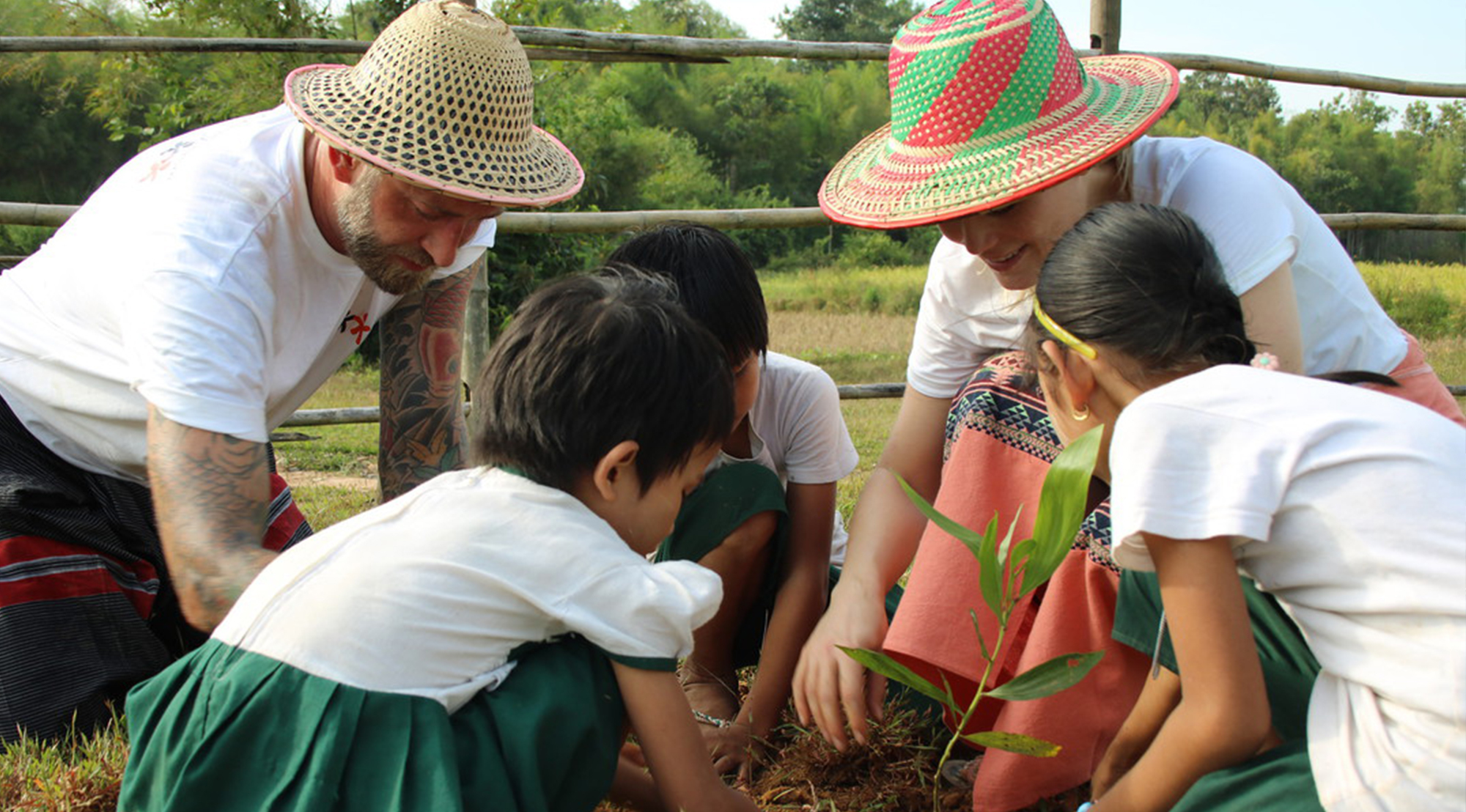An increase in extreme weather due to climate change is causing unimaginable damage globally. In Myanmar, one of the countries most often and most severely affected by natural disasters, thousands of people are dying from disease and hunger as a result of the bad weather. Besides the overexploitation of natural resources, in particular rampant deforestation, the country is fighting inadequate waste disposal. As a result of many years of political and economic isolation in the country, increasing poverty has split society along social and ethnic lines. The Kinderdorf Pestalozzi foundation is also promoting the SDG 2030 with its projects in this region. It promotes sustainable livelihoods and supports uprooted groups of people. Its focus is on future generations, justice, concerted responsibility and is seen as a means to prevent structural violence.
With the introduction of positive peace concepts by the Norwegian peace researcher, Johan Galtung, it is clear that sustainable development constitutes a necessary part of peacebuilding. The concept of positive peace also includes more than an analysis of complex structural reasons and reciprocal effects. Peace only has a deeper meaning, and therefore wider significance, through guiding relevance when negotiations take effect through the well-functioning collaborative work of motivated actors working beyond social and generational boundaries. Early awareness-raising and support of children and young people is an essential prerequisite. A sustainable society includes several generations in its thinking and can only exist within the context of environmental borders, which is why these two factors form the basis of sustainable development in our work.
To get back to Myanmar… The foundation is putting environmental measures into practice in the regions of Irrawaddy, Mandalay, Magway, Shan and Kayah using three convent schools, numerous pupils, teachers and neighboring communities. Environmental and nutritional education are part and parcel of child-centered lessons. Pupils take responsibility independently for the execution of environmental tasks in working groups. Children, teaching personnel and entire municipalities are developing a teaching and learning community. Health issues and plant-based and traditional medicines are also included in the program, as are the careful use of natural resources and adequate disposal of waste. A handbook on child-centered environmental education is being developed in cooperation with the environmental protection department and forestry sector of the Myanmar government. In the long term, recognition of the handbook from this Clean & Green model is an aim of the Ministry of Education and the plan is to be copied in public schools countrywide.
Far from Myanmar, children and young people in the children’s village in Trogen are laying the foundations for peace with shared children’s rights across cultural and national borders. Intercultural and sustainable relationships are experienced and rooted as a matter of course in everyday life. Awareness of peaceful co-existence goes beyond the village. The world has long been shrunk to a village by globalization. Saying “We are all equal” does not guarantee peace. The foundation is involving its partner countries in strategic processes to bring about trans- and inter-institutional as well as transnational framework conditions for a fair social, environmental and economic development of the relevant areas as “one organization”. Environmental and peacebuilding approaches should be multiplied in the control structures. At the negotiation venue and social events, children are encouraged to act as future citizens and ambassadors for a green world, locally as well as globally. Inclusive education with environmental consciousness on all levels represents one of the most promising long-term stabilizing initiatives for peace and sustainability.


